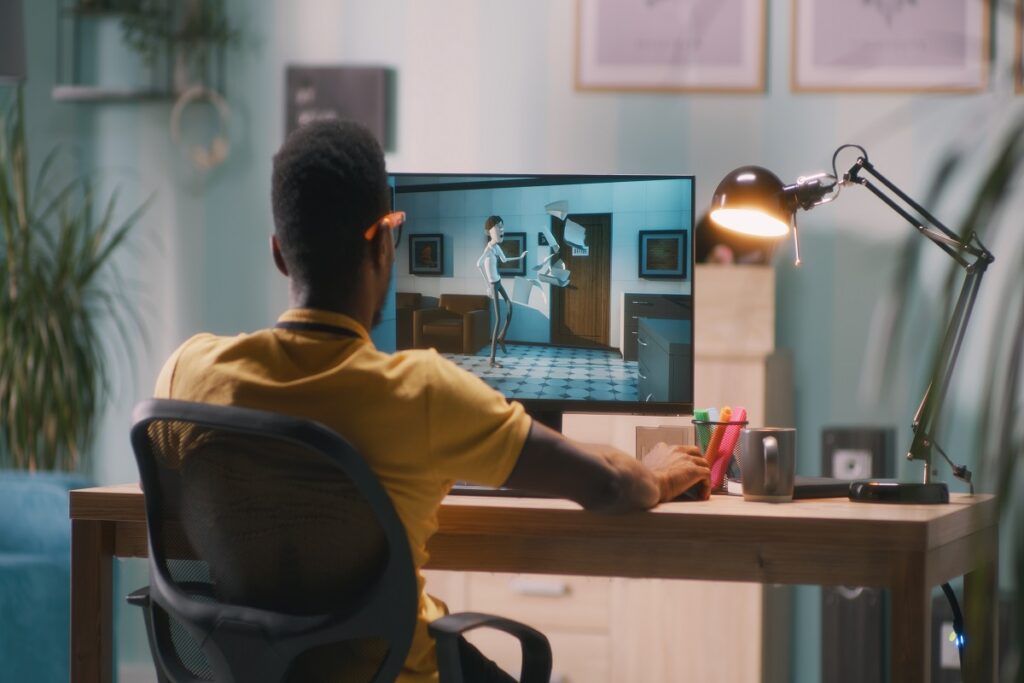The process of creating a 3D character for animation is a challenging task that requires a combination of artistic and technical skills. From concept art to final render, the character designer must take into account a wide range of factors, including anatomy, motion, and emotion.
In this article, we will explore the different stages of 3D character design and highlight some of the key considerations for creating believable and engaging characters. Additionally, we will provide insightful examples and offer valuable resources for those looking to improve their 3D character design skills. So, let’s delve into the steps involved in designing a 3D character.
Concept Art
The first step in designing a 3D character is creating concept art. This is where the designer establishes the overall look and feel of the character, including its proportions, silhouette, and style. Concept art can be done in a variety of mediums, including pencil, pen and ink, or digital tools.
It is important to consider the context of the animation and the role of the character in the story when creating concept art. For example, a villainous character may have a more sinister or menacing appearance than a heroic character. This will help to convey the character’s personality and motivations, and will make them more relatable and believable to the audience. Additionally, concept art can also be used to explore different design options before finalizing the look of the character.
Modeling
Once the concept art is approved, the designer can begin to create a 3D model of the character. This is typically done using software such as Autodesk Maya or ZBrush. The modeler must pay close attention to the character’s anatomy, ensuring that it is accurate and believable. They must also consider how the character will be animated and ensure that the model is built with enough flexibility to allow for a wide range of movement.
Another important aspect that the modeler must consider is the character’s proportions and silhouette. The proportions must be in line with the concept art and should be consistent with the character’s anatomy. Additionally, the silhouette should be distinct and recognizable, as it helps to create a sense of identity and personality for the character. The modeler should also take into account the character’s clothing and accessories, and how they might affect the character’s overall silhouette and appearance.
Texturing and Shading
After the character is modeled, the designer can begin to add texture and shading. This is where the character’s appearance is defined in terms of color, material, and lighting.
Texturing and shading can be done using a variety of techniques, including hand painting, projection mapping, and scan-based workflows. The designer must consider the lighting conditions of the animation and ensure that the character’s textures and shaders are appropriate for the environment. It’s important to keep in mind that the textures and shaders are what give the character its sense of realism, so it’s crucial to get this step right. By paying attention to details like the reflection, refraction, and scattering of light, the designer can create a character that feels truly lifelike.
Rigging
Before the character can be animated, it must be rigged. Rigging is the process of creating a skeleton and controls for the character. This allows the animator to move the character’s joints and manipulate its shape.
Rigging can be a complex and time-consuming process, requiring a good understanding of the character’s anatomy and motion. The rigger must ensure that the controls are intuitive and easy to use for the animator, while also providing enough flexibility to achieve the desired movements and poses. The rigger also needs to consider the technical limitations of the animation software and the final delivery platform. By creating a well-designed rig, the animator can bring the character to life and make it move in believable and compelling ways.
Animation
Once the character is rigged, the animator can begin to bring it to life. This is where the designer’s understanding of motion and emotion comes into play. The animator must consider the character’s motivations, emotions, and actions and create movements that convey those elements.
There are a variety of animation techniques, including keyframe animation, motion capture, and physics-based simulation. The animator can use a combination of techniques to create a more dynamic and believable animation. By combining their technical skills and artistic vision, animators bring characters to life and strive to create truly captivating animations.
Render
The final step in the process of character animation is rendering. This is where the character is transformed into a final image or sequence. The designer must pay close attention to the lighting and camera angles to ensure that the final render is of the highest quality. They must also consider how the character will be composited with the rest of the animation.
The designer must also consider the overall aesthetic of the animation and how the character fits into that aesthetic. They may need to make adjustments to the character’s design or animation to ensure it looks good in the final composition. This step is crucial as it can make or break the final animation. A well-rendered character can bring the animation to life and make it more engaging for the audience.
Conclusion
Creating a 3D character for animation is a challenging task that requires a combination of artistic and technical skills. From concept art to final render, the character designer must take into account a wide range of factors, including anatomy, motion, and emotion. By understanding the different stages of 3D character design and considering the key considerations for creating believable and engaging characters, designers can create characters that are not only visually stunning but also emotionally impactful.
If you want to grow in the art of character animation, we recommend exploring our courses, especially the Animation Industry Essentials course. Our courses are designed and taught by professional animators with years of experience in the industry. You will have the opportunity to work on real-world projects, develop your skills, create a portfolio of work, and take the first step towards a career in animation. Start your journey in the exciting world of character animation today!






